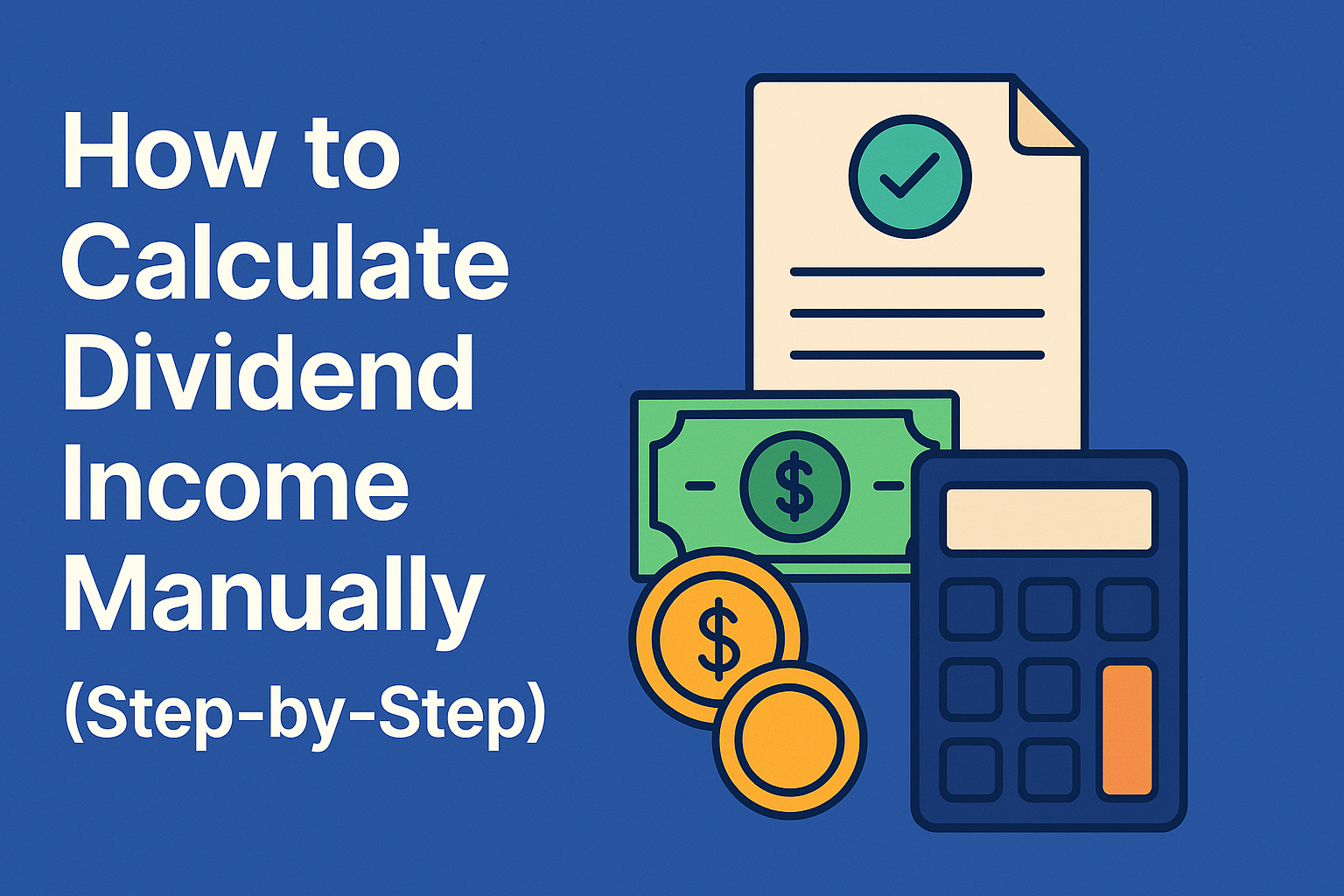
How to Calculate Dividend Income Manually (Step-by-Step)
Introduction
As a dividend investor myself, I’ve learned that understanding exactly how much income your portfolio is generating is just as important as watching stock prices. While online tools (like my SCHD calculator) make things easier, every serious investor should know how to calculate dividend income by hand. Why? Because it gives you clarity, control, and confidence in your investment strategy.
In this guide, I’ll walk you through step by step — using real examples — so you can calculate dividend income manually without relying on any tool.
What is Dividend Income?
Dividend income is the cash payment companies make to shareholders, usually from their profits. For example, if you own a stock that pays $2 per year per share, and you hold 100 shares, your annual dividend income is $200.
Unlike stock price gains (which are unrealized until you sell), dividends are real cash flow — they can be reinvested or used as passive income.
Key Terms You Need to Know
Before calculating, you should understand a few basics:
- Dividend Yield → The annual dividend as a % of stock price.
- Dividend Per Share (DPS) → How much one share pays in dividends annually.
- Number of Shares → How many shares you own in that stock or ETF.
- Payout Frequency → Dividends may be paid quarterly, monthly, or annually.
These are the building blocks of dividend math.
The Dividend Income Formula
There are two common ways to calculate:
- Per Share Method
Dividend Income=Number of Shares×Dividend Per ShareDividend\ Income = Number\ of\ Shares × Dividend\ Per\ ShareDividend Income=Number of Shares×Dividend Per Share
- Yield Method
Dividend Income=Investment Amount×Dividend YieldDividend\ Income = Investment\ Amount × Dividend\ YieldDividend Income=Investment Amount×Dividend Yield
Both lead to the same result, but I recommend using the per share method when you know the exact payout, and the yield method when you only know your investment amount.
Step-by-Step Manual Calculation
- Find Annual Dividend Per Share
Check the company or ETF’s dividend per share (e.g., SCHD pays around $2.65 annually). - Multiply by Number of Shares
Example: 100 shares × $2.65 = $265 annual dividend. - Adjust for Payout Frequency
If it’s quarterly, divide by 4 → $66.25 every quarter. - Consider Reinvestment (Optional)
If you reinvest dividends (DRIP), next year’s dividends will be slightly higher because you own more shares.
Worked Example: SCHD ETF
Let’s say you invest $7,500 into SCHD at $75/share. That gives you 100 shares.
- SCHD’s annual dividend per share ≈ $2.65.
- Total dividend income = 100 × $2.65 = $265/year.
- Paid quarterly → $66.25 every three months.
If you reinvest these dividends, you’ll slowly increase your share count, creating a dividend snowball effect.
Factors That Affect Dividend Income
- Dividend Growth: Some companies increase payouts each year.
- Taxes: Dividends may be taxed depending on your country.
- Reinvestment: DRIP accelerates compounding.
- Inflation: Reduces the real value of income over time.
Common Mistakes to Avoid
- Forgetting payout frequency (monthly vs quarterly).
- Assuming past dividend = future dividend (companies can cut).
- Ignoring taxes and fees.
- Using outdated dividend yield (stock prices change daily).
Manual vs Online Calculators
Manual calculation is great for understanding, but it can get messy if you hold multiple dividend-paying stocks. That’s where a tool saves time.
👉 Instead of calculating every time, you can instantly estimate your income with my SCHD Dividend Calculator — it includes yield, reinvestment, and taxes in just a few clicks.
Conclusion
Learning to calculate dividend income manually is an essential skill for any serious dividend investor. It teaches you the math behind your portfolio and helps you validate online tools.
But once you master the basics, don’t waste time doing it repeatedly — use a calculator for accuracy and efficiency.
Next step: Try the SCHD calculator, test different share counts, and see how much passive income you could generate in the next 5–10 years.
